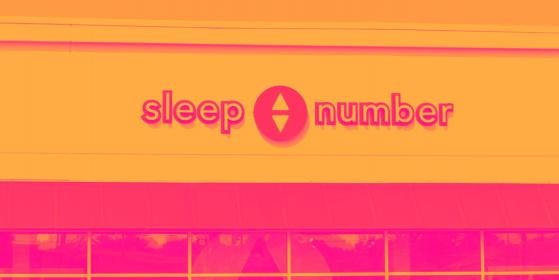Bedding manufacturer and retailer Sleep Number (NASDAQ:SNBR) beat analysts' expectations in Q4 FY2023, with revenue down 13.7% year on year to $429.5 million. It made a GAAP loss of $1.12 per share, down from its loss of $0.24 per share in the same quarter last year.
Is now the time to buy Sleep Number? Find out by reading the original article on StockStory.
Sleep Number (SNBR) Q4 FY2023 Highlights:
- Revenue: $429.5 million vs analyst estimates of $420.8 million (2.1% beat)
- EPS: -$1.12 vs analyst expectations of -$0.88 (27.5% miss)
- Free Cash Flow was -$49.88 million compared to -$60.63 million in the same quarter last year
- Gross Margin (GAAP): 56.6%, up from 54.7% in the same quarter last year
- Same-Store Sales were down 15% year on year
- Store Locations: 672 at quarter end, increasing by 2 over the last 12 months
- Market Capitalization: $254.7 million
Known for mattresses that can be adjusted with regards to firmness, Sleep Number (NASDAQ:SNBR) manufactures and sells its own brand of bedding products such as mattresses, bed frames, and pillows.
Home Furniture RetailerFurniture retailers understand that ‘home is where the heart is’ but that no home is complete without that comfy sofa to kick back on or a dreamy bed to rest in. These stores focus on providing not only what is practically needed in a house but also aesthetics, style, and charm in the form of tables, lamps, and mirrors. Decades ago, it was thought that furniture would resist e-commerce because of the logistical challenges of shipping large furniture, but now you can buy a mattress online and get it in a box a few days later; so just like other retailers, furniture stores need to adapt to new realities and consumer behaviors.
Sales GrowthSleep Number is a small retailer, which sometimes brings disadvantages compared to larger competitors that benefit from economies of scale.
As you can see below, the company's annualized revenue growth rate of 2.7% over the last four years (we compare to 2019 to normalize for COVID-19 impacts) was weak , but to its credit, it opened new stores and grew sales at existing, established stores.
This quarter, Sleep Number's revenue fell 13.7% year on year to $429.5 million but beat Wall Street's estimates by 2.1%. Looking ahead, Wall Street expects revenue to decline 5.7% over the next 12 months.
Same-Store SalesA company's same-store sales growth shows the year-on-year change in sales for its brick-and-mortar stores that have been open for at least a year, give or take, and e-commerce platform. This is a key performance indicator for retailers because it measures organic growth and demand.
Sleep Number's demand within its existing stores has barely increased over the last eight quarters. On average, the company's same-store sales growth has been flat.
In the latest quarter, Sleep Number's same-store sales fell 15% year on year. This decline was a reversal from the 2% year-on-year increase it posted 12 months ago. We'll be keeping a close eye on the company to see if this turns into a longer-term trend.
Key Takeaways from Sleep Number's Q4 Results
Although Sleep Number missed analysts' EPS estimates from a GAAP perspective, its adjusted EPS beat by a wide margin (loss of $0.58 per share vs estimates of a $0.88 per share loss). The adjustment added back $16 million of restructuring costs the company recorded during the quarter, which was related to the planned cost-cutting initiatives management is executing; in 2024, the company expects to save $40-45 million in operating expenses.
We also enjoyed seeing Sleep Number exceed analysts' revenue expectations this quarter. That likely relieved investors as the mattress industry remains in a downturn. Looking ahead, management expects the industry to remain pressured but shared free cash flow guidance that significantly beat Wall Street's estimates ($70 million vs estimates of $48 million). Overall, this was a mixed quarter for Sleep Number, but its free cash flow guidance was impressive. The stock is up 9.5% after reporting and currently trades at $12.1 per share.
